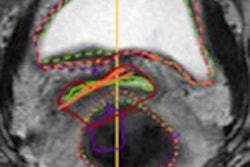Dear Women's Imaging Insider,
Pulmonary embolism (PE) in pregnancy is a serious problem. This important and potentially fatal disease has an estimated incidence of 10.6 per 100,000 in pregnant women. Typically, either a CT pulmonary angiogram (CTPA) or a ventilation/perfusion scan is conducted to investigate PE, but information on CTPA in the literature is scarce. How does it fare in pregnant women? Is it safe? Find out from a relatively large U.K. study presented at the European Society of Thoracic Imaging (ESTI) 2014 meeting.
Also from the U.K., researchers found standard image processing algorithms help mammography detect calcification clusters more effectively than low-contrast or film-screen algorithms and could reduce false positives. What else did they find? Click here to learn more.
Do long reading times affect a radiologist's performance, particularly when it comes to mammograms? Do eyes start to glaze over and abnormalities get missed? A research team investigated just that. Data from six previously published studies that assessed radiologist performance over the course of reading sessions were re-evaluated. Read their results.
Also in your Women's Imaging Digital Community, one of our columnists, the Maverinck, has tackled the statistical minefield of breast screening. He writes that many authors use the wrong methods, draw general conclusions from a small number of case studies, and confuse correlation and causation. Ouch. Discover what else he has to say.
The new chair of the Breast Imaging Working Group of the German Radiological Society has lots of plans for the group under his leadership. Dr. Markus Müller-Schimpfle wants to strengthen standardization and use the language of consensus to help improve safety for service users and, in doing so, encouraging wider acceptance of breast diagnostics. Read what else he's up to.
Last but not least, after a Belgian breast screening program went digital, researchers found subtle differences in performance between digital and analog mammography systems. One of them was a major difference in radiation dose, based on whether sites used digital or computed radiography.
That's just a smattering of the articles to be found in your Women's Imaging Digital Community. Be sure to check out the rest of them below this message.




















